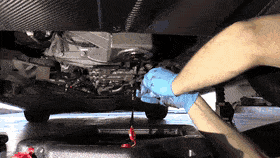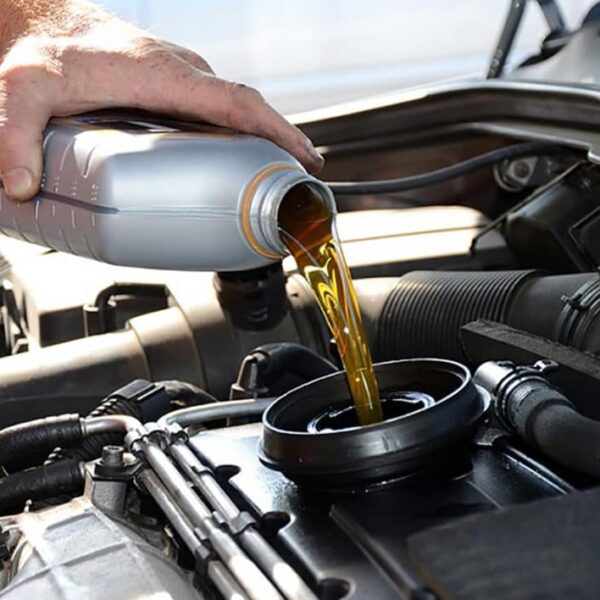Low viscosity engine oils (LVO) are increasingly recognized for their significant role in enhancing fuel economy within internal combustion engines (ICE). As vehicle manufacturers strive for more efficient technologies, the shift towards LVOs has gained traction over the past few decades. These oils not only promise better fuel efficiency but also aim to reduce emissions, thus addressing environmental concerns.
The primary goal of this study is to evaluate the performance of low viscosity oils in real-world fleet conditions, specifically focusing on their effects on engine wear and oil performance indicators. By conducting a comprehensive test involving a fleet of 39 buses, the study aims to shed light on the practical implications of using LVO in heavy-duty vehicles. This exploration is particularly pertinent given the increasing emphasis on sustainability and the reduction of greenhouse gas emissions in the transportation sector.
Key points to consider include:
- Fuel Economy: LVOs are integral in improving fuel efficiency by minimizing friction within the engine.
- Environmental Impact: With stricter regulations on emissions, using LVOs can contribute to a reduction in harmful exhaust gases.
- Engine Wear: Understanding the effects of LVO on engine wear is crucial for assessing their long-term viability in heavy-duty applications.
As the automotive industry continues to innovate, it is essential to evaluate not just the performance benefits of low viscosity oils but also their potential drawbacks. This study endeavors to provide a balanced view by analyzing both sides of the coin. With comprehensive data collected from the fleet tests, insights gained will help fleet operators and oil formulators make informed decisions about oil selection and engine maintenance strategies.
This study aims to explore the multifaceted relationship between low viscosity engine oils, engine wear, and performance indicators, providing valuable information for the future of engine lubrication and maintenance in heavy-duty vehicles.
Understanding Engine Efficiency and Mechanical Losses
Engine efficiency is a crucial aspect of modern internal combustion engines (ICE), directly influencing fuel consumption, performance, and emissions. Understanding how engines operate can help engineers and manufacturers improve designs, leading to more efficient vehicles. To grasp this concept, it’s essential to consider the relationship between fuel energy and the energy transmitted to the wheels.
Importance of Engine Efficiency
Efficiency in an engine can be defined as the ratio of useful work output to the total energy input. It is primarily influenced by several factors:
- Thermodynamic Processes: These include the combustion cycle and heat management within the engine.
- Fluid Mechanics: The movement and behavior of fluids within the engine impact how effectively energy is converted into motion.
- Mechanical Losses: These are internal losses due to friction and resistance between moving parts.
Research shows that only 15-20% of the energy stored in fuel actually reaches the wheels of heavy-duty vehicles under normal operating conditions. This is a staggering figure that highlights the potential for improvement in engine design and lubrication.
Mechanical Losses in ICE
Mechanical losses in an engine occur mainly due to friction between moving components. A significant portion of the energy generated from fuel is lost in overcoming this friction, which can account for up to 50% of total mechanical losses in ICE. Such losses stem from various sources:
- Piston Rings: They must create a seal to maintain pressure, but this also generates friction.
- Journal Bearings: These components support the crankshaft, and their interaction with oil creates resistance.
- Valve Train Systems: The mechanisms responsible for opening and closing valves also contribute to frictional losses.
Understanding these losses is critical. By reducing mechanical losses, manufacturers can significantly enhance engine efficiency, resulting in improved fuel economy and lower emissions.
Strategies for Reducing Mechanical Losses
To improve overall engine efficiency, several strategies can be employed:
- Design and Manufacture of Lighter Parts: Reducing the weight of engine components helps lower the energy required to move them.
- Use of Non-Metallic Materials: Advanced materials can reduce friction and wear, improving engine performance.
- Improvements in Surface Coatings: Specialized coatings can enhance durability and decrease friction in critical areas.
- Engine Downsizing: Smaller engines can operate more efficiently, particularly when paired with turbocharging and advanced fuel injection systems.
- Use of Low Viscosity Oils: LVOs reduce friction between engine components, promoting better energy transfer from the fuel to the wheels.
By implementing these strategies, automotive engineers can target the reduction of mechanical losses and increase the percentage of energy used effectively, thereby enhancing the overall performance and efficiency of heavy-duty vehicles.
The Role of Low Viscosity Oils in Heavy-Duty Vehicles
Low viscosity oils (LVO) have gained significant attention in the automotive industry, particularly for heavy-duty vehicles (HDVs). As engine technology evolves, the demand for more efficient lubrication solutions has become crucial. Low viscosity oils play a pivotal role in enhancing engine performance, fuel economy, and reducing emissions. Their unique properties help address several challenges associated with traditional high-viscosity oils.
Key Advantages of Low Viscosity Oils:
- Improved Fuel Economy: LVO can reduce internal friction within the engine. Studies indicate that using LVO can lead to a fuel consumption reduction of approximately 1% to 4%. This reduction is largely due to the decreased resistance as the oil flows through engine components.
- Enhanced Engine Performance: By minimizing friction, LVO allows for smoother operation of engine parts. This results in improved power output and responsiveness, critical for heavy-duty applications that require consistent performance under load.
- Reduced Emissions: With better fuel efficiency comes a reduction in harmful emissions. Lower fuel consumption directly correlates with decreased exhaust pollutants, contributing to compliance with stringent environmental regulations.
However, despite these advantages, the adoption of low viscosity oils is not without challenges.
Potential Challenges and Considerations:
- Wear Performance: A primary concern with LVO is the potential increase in engine wear. The reduction in oil viscosity may lead to thinner oil films at high temperatures, which can result in increased metal-to-metal contact. This raises the risk of wear at critical junctions, especially if the oil formulation is not optimized.
- Oil Film Thickness: As viscosity decreases, the oil film thickness can become insufficient to protect engine components adequately. This is particularly critical in high-load scenarios commonly experienced in heavy-duty applications.
- Compatibility with Engine Technologies: Not all engines are designed to operate optimally with low viscosity oils. Compatibility issues can arise, particularly in older engines that may have been engineered for higher viscosity oils.
In light of these challenges, the formulation of low viscosity oils is crucial. A well-designed low viscosity oil incorporates advanced additives that enhance its protective capabilities, ensuring that engine wear remains minimal.
Moreover, the evolving landscape of heavy-duty engines necessitates ongoing research into the impact of LVO. Manufacturers are continuously exploring how different oil formulations interact with various engine technologies. The goal is to maximize the benefits of low viscosity oils while mitigating potential drawbacks.
Low viscosity oils represent a promising avenue for improving the efficiency of heavy-duty vehicles. They provide several advantages, including enhanced fuel economy and reduced emissions. However, it is essential to consider their impact on engine wear and performance. Ongoing research and development will be crucial in ensuring that the benefits of low viscosity oils can be fully realized without compromising engine longevity.
Here’s a table outlining the key advantages and disadvantages of low viscosity oils (LVO) in heavy-duty vehicles:
| Key Advantages | Key Disadvantages |
|---|---|
| Improved Fuel Economy | Potential Increase in Engine Wear |
| – Reduces internal friction within the engine. | – Thinner oil films may lead to increased wear at critical junctions. |
| – Fuel consumption reduction of approximately 1% to 4%. | – Increased risk of metal-to-metal contact under high load. |
| Enhanced Engine Performance | Oil Film Thickness Concerns |
| – Allows for smoother operation of engine parts. | – Insufficient oil film thickness at high temperatures can compromise protection. |
| – Improves power output and responsiveness. | – Risk of wear increases in high-load scenarios. |
| Reduced Emissions | Compatibility Issues with Engine Technologies |
| – Lower fuel consumption correlates with decreased exhaust pollutants. | – Older engines may not be optimized for low viscosity oils. |
| – Helps comply with stringent environmental regulations. | – Potential for oil degradation or inadequate lubrication in some engines. |
Fleet Testing of Low Viscosity Oils (LVO)
The study conducted on low viscosity oils (LVO) involved a comprehensive fleet testing approach, designed to assess the real-world performance of these lubricants in heavy-duty engines. This section outlines the methodology, key measurements taken during the testing phase, and the analysis of the results obtained. By focusing on actual fleet operations rather than laboratory simulations, the study aimed to provide valuable insights into the practical implications of using LVO in internal combustion engines.
A. Methodology
The testing phase comprised a detailed design of experiments (DoE) involving a fleet of 39 buses. These buses were chosen to represent a range of operating conditions and engine technologies. The study included:
- Two Engine Technologies: To evaluate the performance of LVO across different engine types.
- Four Different Lubricants: This variety allowed for a comparative analysis of how each oil performed under similar conditions.
The primary objective was to gather extensive data on engine wear and oil performance, ensuring a robust analysis that reflects real-world scenarios. Despite challenges in executing the full range of experiments due to operational constraints, the design ensured that sufficient data was collected to draw meaningful conclusions.
B. Key Measurements
During the fleet testing, several critical measurements were taken to evaluate the impact of LVO on engine performance. The focus was on understanding wear patterns and the characteristics of the lubricants used. The key measurements included:
- Elemental Composition of Wear Debris: Analyzed using Inductively Coupled Plasma Atomic Emission Spectroscopy (ICP-AES) to identify wear particles and their sources.
- High-Temperature High-Shear (HTHS) Viscosity: Measured to assess the lubricant’s performance under extreme conditions.
- Oil Consumption: Monitored to determine any differences in oil usage between LVO and traditional oils.
These measurements provided a comprehensive picture of how LVO interacts with engine components and its overall performance during operation.
C. Results and Analysis
The analysis of the collected data revealed insightful findings regarding the use of LVO in heavy-duty engines. The results demonstrated that with a properly formulated low viscosity oil, there was no significant increase in engine wear when compared to baseline lubricants. Specifically:
- Engine Wear: The wear rates observed were comparable across all oil types, indicating that LVO does not adversely affect engine longevity.
- HTHS Viscosity Variation: There were no noteworthy differences in viscosity levels, suggesting that LVO maintained stable lubrication characteristics throughout its operational life.
- Oil Consumption: The consumption rates were similar to those of traditional oils, debunking concerns that LVO would lead to increased oil usage.
These findings provide strong evidence that low viscosity oils can be effectively used in heavy-duty engines without compromising wear performance or increasing maintenance requirements. This study not only supports the continued adoption of LVO in the industry but also opens the door for further research into optimizing oil formulations for even greater efficiency and performance benefits.
The fleet testing of low viscosity oils demonstrated that these lubricants can deliver comparable engine wear and performance outcomes to conventional oils. The study’s comprehensive methodology, rigorous measurements, and analysis of real-world data underscore the potential of LVO in enhancing fuel economy while maintaining engine integrity.
Tribology and Wear Mechanisms in Engines
Tribology, the study of friction, wear, and lubrication, plays a crucial role in the performance and longevity of internal combustion engines (ICE). Understanding the tribological interactions within an engine is essential for optimizing its efficiency and minimizing wear. Various components of the engine experience different tribological conditions, which significantly influence wear rates and, consequently, the overall engine performance.
A. Importance of Tribology in Engine Performance
- Friction Reduction: One of the primary goals of tribology in engines is to reduce friction between moving parts. This reduction not only enhances engine efficiency but also improves fuel economy.
- Wear Minimization: Effective lubrication can significantly decrease wear rates on critical components, extending their lifespan and reducing maintenance costs.
- Heat Management: Tribological systems also help in dissipating heat generated during operation, maintaining optimal operating temperatures.
The main tribological systems in an engine include the piston ring pack, journal bearings, and valve train. Each of these systems experiences unique lubrication challenges and wear mechanisms. For instance, the piston rings are subject to high temperatures and pressures, requiring robust lubrication to prevent scoring and wear.
B. Key Tribological Systems in Engines
- Piston Ring Pack System
- The piston ring pack seals the combustion chamber while allowing controlled oil consumption.
- Proper lubrication is vital to minimize friction and wear between the piston and cylinder walls.
- Journal Bearings
- Journal bearings support the crankshaft and are crucial for reducing friction in rotating systems.
- These components rely on hydrodynamic lubrication, where a film of oil separates moving surfaces.
- Valve Train System
- The valve train transmits motion from the camshaft to the engine valves, enduring significant mechanical stress.
- Lubrication in this system is essential for reducing wear on camshafts and lifters.
C. Stribeck Curve and Fluid Film Lubrication
The Stribeck curve is a fundamental concept in tribology that illustrates the relationship between friction, lubrication conditions, and speed. This curve defines three main lubrication regimes:
- Boundary Lubrication: Occurs at low speeds, where surfaces may come into direct contact. This condition can lead to increased wear if not properly managed.
- Mixed Lubrication: In this regime, both fluid film and direct contact occur. This situation can create a delicate balance, where adequate lubrication is necessary to prevent wear.
- Fluid Film Lubrication: Achieved at higher speeds, where a continuous oil film separates the surfaces, drastically reducing friction and wear.
Understanding these lubrication regimes is critical when implementing low viscosity oils. While low viscosity lubricants can enhance fuel economy by reducing friction, they also risk creating insufficient oil film thickness, especially in high-load or low-speed conditions. This can lead to increased wear rates and potentially shorten engine life.
D. Impact of Low Viscosity Oils on Wear
The introduction of low viscosity oils in heavy-duty engines raises concerns about their effects on wear phenomena. While these oils offer benefits in terms of fuel efficiency, their reduced viscosity can lead to thinner oil films.
- Potential Risks:
- Increased likelihood of metal-to-metal contact in certain conditions, particularly under high load or low-speed operations.
- Possible degradation of oil performance over extended oil drain intervals, leading to increased wear.
Nevertheless, studies indicate that with the correct formulation and additive packages, low viscosity oils can perform adequately without compromising engine wear. It’s essential to monitor wear indicators and oil conditions continuously to ensure optimal performance and longevity of the engine components.
Conclusion, a comprehensive understanding of tribology and wear mechanisms is vital for maximizing engine performance and durability. The careful selection and formulation of lubricants, especially low viscosity oils, can significantly influence the tribological environment within an engine. As technology advances, ongoing research and development in tribological systems will continue to improve the efficiency and reliability of internal combustion engines.
High-Temperature High-Shear (HTHS) Viscosity Considerations
High-Temperature High-Shear (HTHS) viscosity is a crucial parameter in evaluating the performance of engine oils, particularly low viscosity oils (LVO). This measure assesses how an oil behaves under extreme conditions, such as high temperatures and shear rates typically found in engine operations. Understanding HTHS viscosity is vital for ensuring optimal lubrication and reducing wear in internal combustion engines (ICE).
Key Points about HTHS Viscosity:
- Definition: HTHS viscosity refers to the oil’s resistance to flow under high temperatures and shear conditions, typically measured at 150°C.
- Importance: It indicates how well the oil can maintain a protective film between engine components, especially under severe operating conditions. This protection is critical for minimizing wear and enhancing engine longevity.
- Industry Standards: The Society of Automotive Engineers (SAE) sets the HTHS viscosity standards. For instance, the SAE J300 standard specifies that the minimum HTHS viscosity for an SAE 30 grade oil is 2.9 cP, while ACEA specifications recommend a minimum of 3.5 cP for heavy-duty diesel oils.
The evolution of HTHS viscosity during oil use can reveal significant insights into the oil’s performance over its service life. As oils age, they undergo various chemical and physical changes, affecting their viscosity. Monitoring this evolution is essential for fleet operators to ensure that the oils remain effective throughout their oil drain intervals (ODI).
In the study of low viscosity oils in real-world fleet testing, the HTHS viscosity values of both candidate low viscosity oils and baseline oils were closely examined. Here’s what the findings indicated:
- Initial Measurements: Fresh oils had HTHS viscosity values near the lower limits established by industry standards.
- Performance Maintenance: The study showed that the HTHS viscosity remained relatively stable throughout the testing period, suggesting that well-formulated LVOs can maintain performance without significant degradation.
- Impact on Wear: The correlation between stable HTHS viscosity and wear performance indicated that LVOs do not compromise protective oil films, addressing one of the primary concerns about their use.
HTHS viscosity is more than just a number; it represents the oil’s ability to perform under challenging conditions. For fleet operators, understanding and monitoring HTHS viscosity can guide oil selection and replacement strategies, ensuring optimal engine protection and performance. Thus, both manufacturers and users of low viscosity oils should prioritize HTHS viscosity in their assessments to optimize engine health and efficiency.
Conclusions and Implications for the Future
The study on low viscosity engine oils (LVO) conducted in a real-world fleet setting provides valuable insights into their performance and impact on engine wear. The primary conclusion drawn from this research is that the implementation of LVO does not necessarily lead to increased wear in engines, provided that the oils are formulated correctly. This finding is significant, as it supports the ongoing trend toward utilizing low viscosity lubricants in heavy-duty vehicles without compromising engine longevity.
Key takeaways from the study include:
- Wear Performance: The candidate low viscosity oils used in EURO IV and CNG engines demonstrated wear rates comparable to those of conventional oils.
- HTHS Viscosity: The high-temperature, high-shear (HTHS) viscosity values were maintained within acceptable limits, ensuring effective lubrication under demanding conditions.
- Fuel Economy: The anticipated fuel economy benefits were realized, aligning with previous laboratory studies and confirming the practicality of LVO in real-world applications.
These results suggest that fleet operators can confidently adopt low viscosity oils as part of their maintenance strategy. However, it is crucial to ensure that the oils are properly formulated, as variations in formulation can lead to different outcomes in performance and wear characteristics.
Looking toward the future, several implications arise from this study:
- Policy and Standards Development: As the automotive industry moves toward stricter fuel economy regulations, the need for well-defined standards for low viscosity oils in heavy-duty vehicles becomes paramount. Organizations like the European Automobile Manufacturers’ Association (ACEA) will likely need to establish guidelines that incorporate findings from studies like this one.
- Continued Research: Ongoing research is essential to further explore the long-term effects of low viscosity oils on engine performance. Investigating various oil formulations, engine types, and operating conditions will contribute to a more comprehensive understanding of their behavior in different scenarios.
- Fleet Operator Education: Educating fleet operators about the benefits and correct application of LVO is vital. Workshops, training sessions, and informational resources can help dispel myths and clarify the advantages of switching to low viscosity lubricants.
- Market Trends: As awareness of the advantages of LVO grows, we may see a shift in the lubricant market, with increased demand for low viscosity options. This trend will likely encourage manufacturers to invest in the development of innovative formulations that balance performance and environmental sustainability.
The positive findings regarding low viscosity engine oils underscore their potential to enhance fuel economy without compromising engine wear. As the industry embraces this shift, both fleet operators and lubricant formulators must collaborate to harness the full benefits of LVO technology. The future of engine lubrication is promising, but it requires continued diligence and innovation to ensure optimal performance in an evolving landscape.

Author: Frank Jenkins
Frank Jenkins – Family Car Expert and Safety Advocate
Frank Jenkins, steering you towards safer and smarter family driving. Based in: New York, New York, USA
About Me
Greetings from New York City! I’m Frank Jenkins, your navigator in the world of family vehicles and automotive safety. With over 15 years of experience as an automotive writer and safety consultant, I focus on what matters most to families on the go. Through rigorous testing and detailed research, I ensure that your next family car is not only comfortable and stylish but also packed with the latest safety features.
Contact Information
Topics of Interest
- Family-Friendly Car Reviews
- Vehicle Safety Systems
- Child Passenger Safety
- Road Trip Planning and Car Entertainment
Memberships
More About Frank
Short Bio: Frank Jenkins has become a household name for parents seeking advice on the best and safest cars for their families. His reviews are infused with a parent’s concern and an engineer’s precision. Education: Bachelor of Science in Automotive Technology from the New York University Qualifications: Certified Child Passenger Safety Technician (CPST) Languages: English (Native), French (Intermediate) Previous Roles:
- Safety Feature Columnist for Family Wheels Magazine
- Technical Advisor for Safe Car Campaigns
- Host of “The Safe Family Road Trip” Podcast
Fun Fact: Frank once organized a cross-country road safety workshop, visiting over 50 cities in 30 days.
Interactive Features
- Safety First with Frank: A forum dedicated to discussing and sharing best practices for family road safety.
- Frank’s Philosophy: “The best family memories are made in cars that put safety above everything else.”
- Your Stories: A section for readers to share their family road trip experiences and car-related anecdotes.
Featured Content
Newest Articles:
- “The Ultimate Guide to Family Cars in 2024”
- “Innovations in Car Safety: What Families Need to Know”
Highlighted Content:
- “Minivan or SUV: The Great Family Debate Resolved”
- “Child Seats 101: Choosing the Right One for Your Car”
Recommended Reads:
- “The Road to Safety: How Cars Have Become Safer for Children”
- “Entertaining Your Kids on the Road: Tips and Tricks”
Multimedia Spotlight:
- Podcast: “Drive Time Family” – Discussions on making family travel safer and more enjoyable
- Video Series: “Car Seat Clinics” – Demonstrations on proper car seat installation and usage
Editorial Team & Collaborations
Frequent Co-authors:
- Emily Chen, Urban Driving Specialist
- Marcus O’Reilly, Off-Road Adventure Guru
Editorial Staff Overview: A team of dedicated writers and safety experts committed to helping families make informed decisions about their vehicles. Editorial Guidelines: We are steadfast in providing transparent and practical advice that prioritizes the well-being of all passengers.
Journey With Me
For reliable reviews, safety advice, and the best in family automotive, hit the road with Frank Jenkins at oilforcar.com






Pingback: Difference between a petrol and diesel engine - Explore Oil For Car -Motor Oil Maintenance and Car Tips
Pingback: How Cold Temperatures Affect Engine Oil: Essential Tips for Winter Driving - Oil for Car – Car Oil Reviews, Guides, & Car Tips
Pingback: How to Protect Your Engine with the Right Lubricants in Extreme Temperatures - Oil for Car – Car Oil Reviews, Guides, & Car Tips
Pingback: 2-Stroke vs 4-Stroke Engines: Understanding Key Differences and Oil Choices - Oil for Car – Car Oil Reviews, Guides, & Car Tips
Pingback: Recognizing the Signs of a Failing Car Battery: A Complete Guide to Avoiding Unexpected Breakdowns - Oil for Car – Car Oil Reviews, Guides, & Car Tips
Pingback: Understanding the Difference Between API CK-4 and FA-4 Engine Oils - Oil for Car – Car Oil Reviews, Guides, & Car Tips